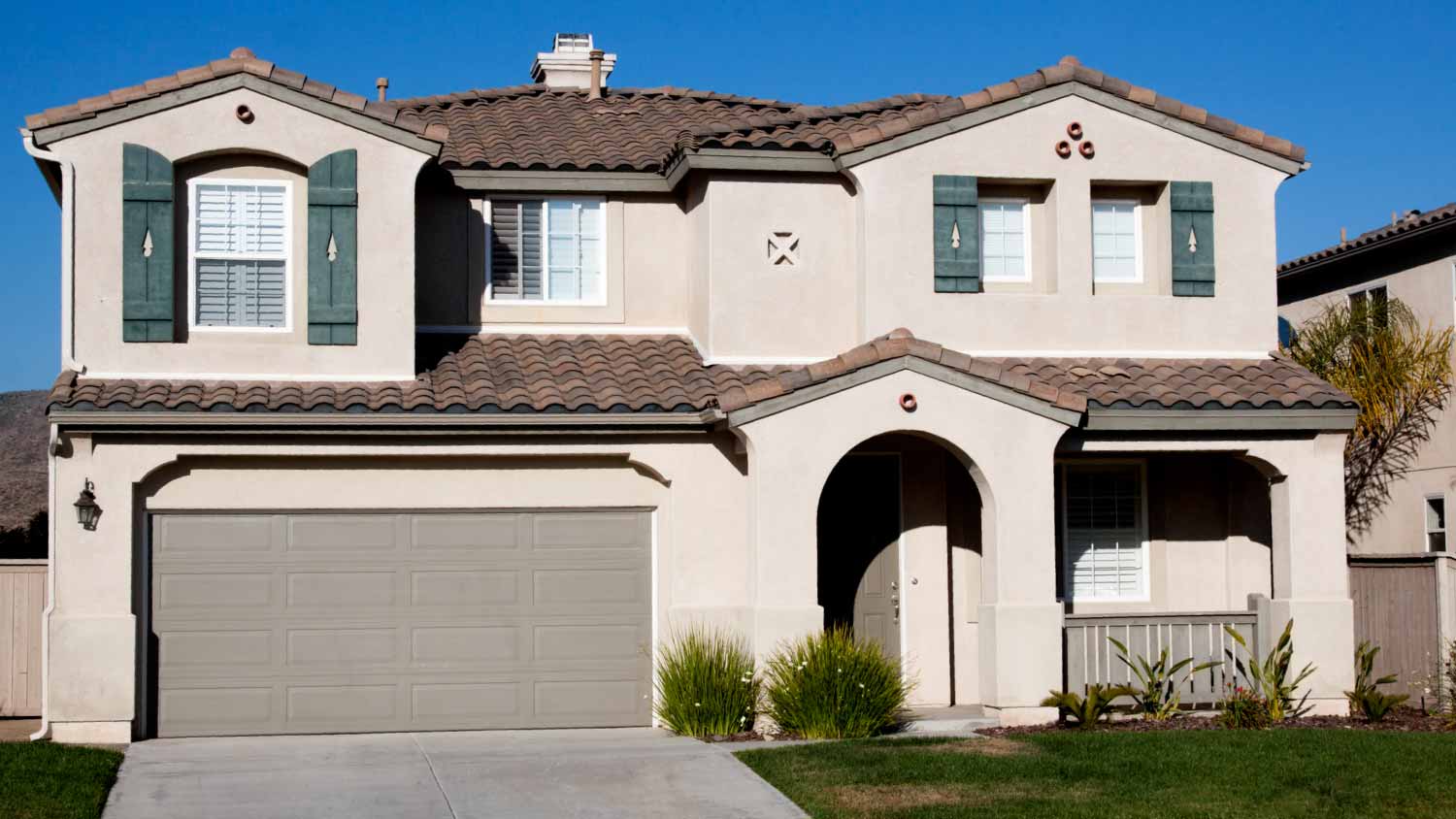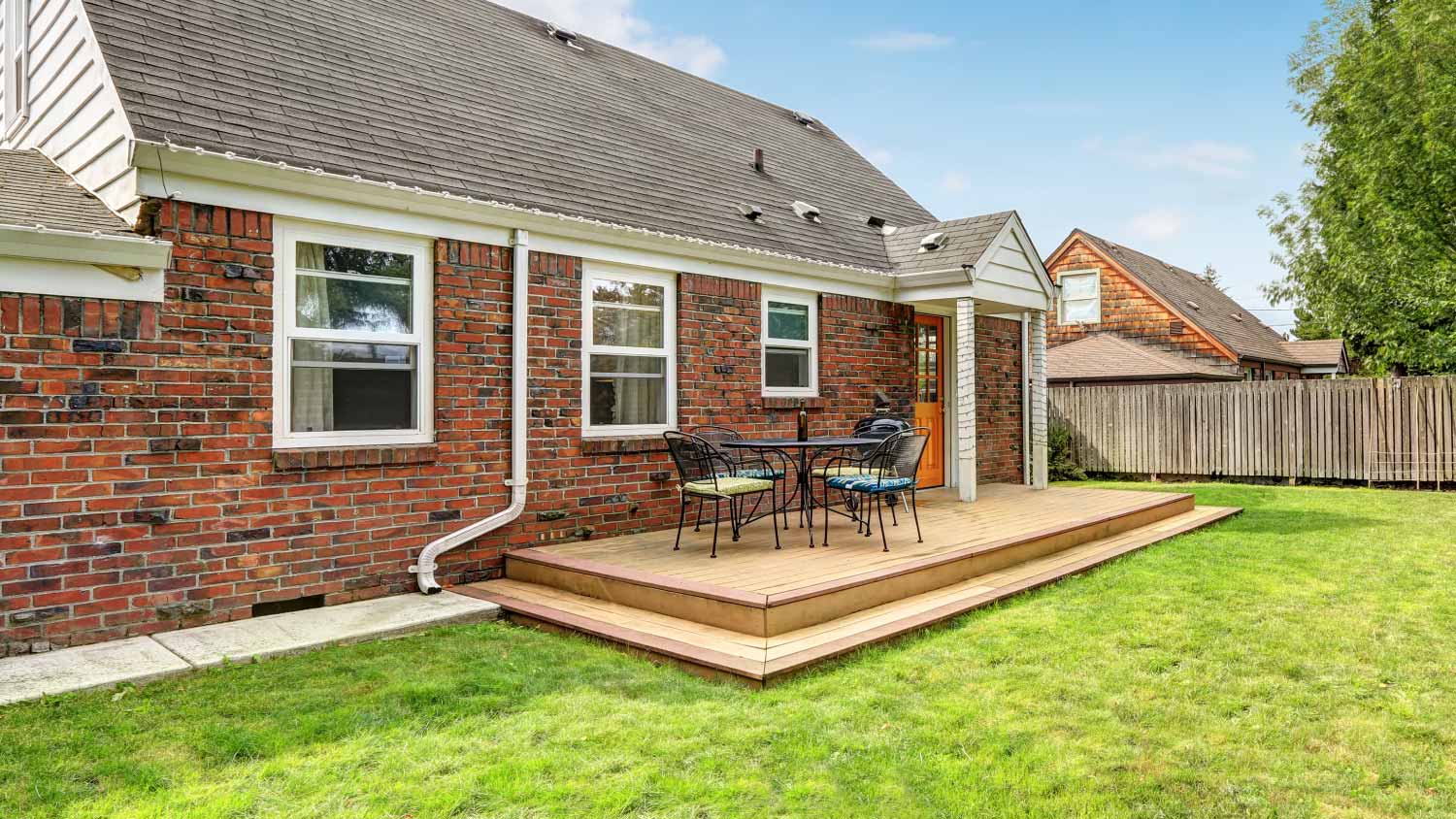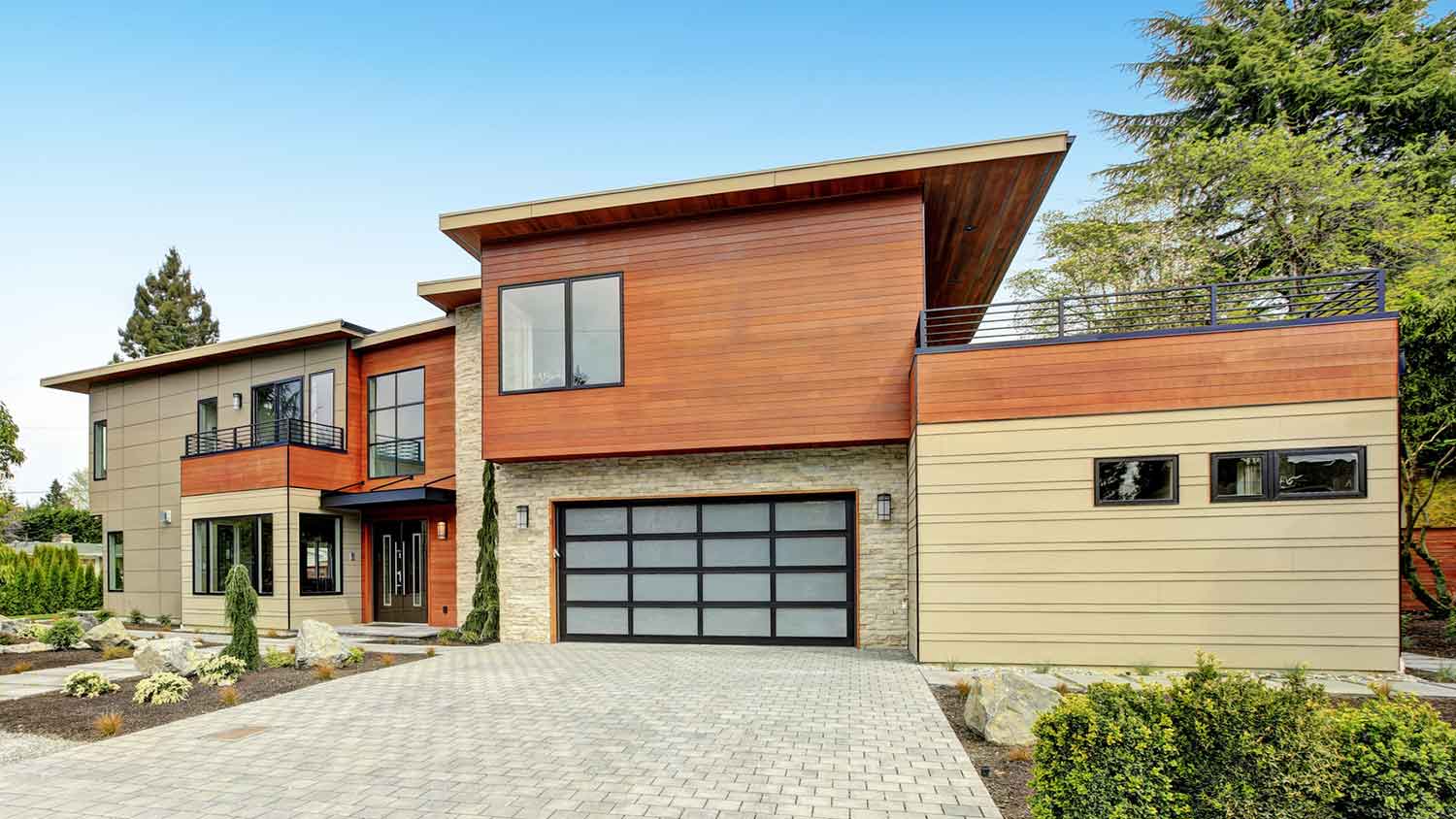
Fiber cement siding is durable, fire-resistant, and affordable. Learn more about fiber cement installation costs in Columbus, OH.
They’re made differently, and they perform differently


Brick costs an average of $9 to $28 per square foot, while EIFS ranges from $8 to $16 per square foot.
EIFS has a lifespan of 20 to 50 years, while brick can last for 100 years or more.
Brick is more durable and lower-maintenance than EIFS.
EIFS offers homeowners more design options than brick.
Brick and EIFS are both popular home exterior materials, but they differ quite a bit in terms of appearance, durability, and cost. EIFS, also known as synthetic stucco, looks similar to traditional stucco but offers superior insulation. Brick, meanwhile, is loved for its timeless beauty and durability. This guide breaks down the key differences between EIFS versus brick as well as the pros and cons of each to help you make the right choice for your home.
One of the major differences between EIFS and brick is how they’re made. EIFS is composed of multiple layers and contains acrylic resins and polymers. Brick, meanwhile, is made of clay and shale that get formed into pavers and fired in a kiln.
EIFS is more affordable than brick, but brick has a lifespan that’s at least twice as long as that of EIFS. Brick is the more durable of the two options, but doesn’t offer homeowners as many design and color options.

EIFS stands for Exterior Insulation and Finish System, a type of cladding system that provides one continuous layer of insulation on a home’s exterior, boosting its energy efficiency and fire resistance. Also known as synthetic stucco, EIFS consists of an insulation board attached to a building substrate, a reinforced base coat, and a textured protective finish. It’s typically applied in multiple layers over exterior sheathing and can be customized in many different styles and textures.
| Pros | Cons |
|---|---|
| More affordable than brick | Less moisture resistant than brick |
| Many design possibilities | Less durable than brick |
| Energy-efficient | Insurance challenges |
Best for:
Homes in moderate climates
Homeowners seeking a high degree of design flexibility
When it comes to the pros of EIFS, it stands out for its insulation properties, which significantly reduce thermal bridging and outdoor noise while enhancing a home’s energy efficiency. EIFS is also significantly less expensive than brick. And while it’s not quite as fire resistant as brick, it still offers superior fire resistance compared to many other home exterior materials.
EIFS also has an edge over brick in terms of design flexibility. It can be finished in a much wider variety of textures and colors—it can even be designed to mimic the appearance of other, more expensive materials like brick and stone.
EIFS is prone to moisture-related problems, especially when improperly installed. Flaws introduced during the installation process and/or ongoing wear and tear on the finish can lead to cracks and chips, which allow moisture to seep in, leading to issues like mold and rot. For that reason, many insurance companies offer limited coverage for homes with EIFS.
EIFS is also less resistant to damage compared to brick, and it has a shorter lifespan. In addition, repairs and maintenance are often more time-consuming for EIFS. While many homeowners can make minor brick repairs themselves, repairing EIFS typically requires more time and expertise to create a seamless finish, so it’s best left to the pros.

Brick is a natural material made from clay and shale. These materials are molded into the shape of bricks before being fired in a kiln at high temperatures. This process gives brick exceptional hardness and durability compared to most other exterior materials.
| Pros | Cons |
|---|---|
| Low-maintenance | Limited design options |
| Extremely durable | More expensive than EIFS |
| Resists fire and moisture |
Best for:
Homeowners seeking a timeless appearance
Homes in extreme climates
Brick is a relatively low-maintenance building material, especially compared to EIFS. It’s also more durable and longer-lasting than EIFS, with a strong resistance to impact and weather damage as well as fire, insect, and moisture problems. This enhanced durability means brick can last for centuries when properly maintained.
Speaking of maintenance, brick is generally easier to maintain than EIFS, usually only requiring occasional repointing of the mortar joints. Additionally, brick increases a home’s resale value more than EIFS, largely thanks to its extraordinary durability and timeless appearance. Brick also does a relatively good job of reducing exterior noise, though it’s not quite as effective as EIFS.
The design options for brick are limited, particularly when compared to EIFS. It typically only comes in natural clay tones, like gray, red, and brown, and there’s not much variation in texture. However, it can be painted to any color. Brick is also significantly more expensive than EIFS.
Before deciding whether brick or EIFS is the best option for your home, compare them based on the following factors to make the right choice for your home.
Both EIFS and brick have aesthetic advantages depending on what you’re looking for. EIFS offers a broad range of design possibilities, allowing you to customize its texture, color, and overall appearance. This versatility makes it ideal for contemporary homes and homeowners seeking a specific aesthetic not easily achieved by less versatile materials like brick.
Meanwhile, brick offers a classic, timeless appearance that will never go out of style. It’s particularly popular among traditional homes, but it looks great with a wide variety of other architectural styles as well.
When it comes to customization options, EIFS is the clear winner. You can customize nearly every aspect of EIFS, including its texture, color, and overall design. It can also be designed to look like other more expensive building materials, like brick and stone, allowing you to get that look for less. Meanwhile, brick’s colors and textures are far more limited.
Brick is highly coveted for its durability, often lasting for hundreds of years with relatively minimal maintenance. The material offers superior resistance to impact, insects, fire, and moisture damage compared to EIFS and many other building materials. This makes it a particularly popular choice for homes in areas with severe weather.
The cost of brick is more than EIFS, usually falling between $9 and $28 per square foot. EIFS typically costs between $8 and $16 per square foot. That said, since brick is more durable and long-lasting than EIFS, it usually costs less over time in terms of maintenance, replacements, and repairs.
Neither EIFS nor brick is particularly suitable for DIY installations since both require specialized skills and knowledge. However, EIFS tends to be less time-consuming and labor-intensive to install. These installations typically involve preparing the surface, attaching insulation boards, applying a base coat, embedding mesh, then applying a finish coat.
Brick installations, while relatively straightforward in terms of laying bricks and applying mortar, require added precision and expertise to ensure a home’s structural integrity and aesthetic appeal. Brick is also a much heavier material than EIFS, making the installations more physically demanding.
Many homeowners can make brick repairs themselves by replacing individual bricks or repointing mortar joints, both of which are relatively simple and straightforward tasks, especially for handy homeowners.
EIFS repairs are often more complicated as they require specialized skills and knowledge to create a matching finish and ensure the integrity of the moisture barrier. For that reason, it’s not recommended that homeowners attempt to repair EIFS themselves unless they have professional-level expertise in these types of repairs. When in doubt, contact a siding repair pro near you for a quote.
Brick maintenance often requires little more than the occasional cleaning. EIFS, meanwhile, must be inspected regularly for any cracks or other damage that can lead to costly moisture problems. The finish also needs to be cleaned regularly to prevent staining. And while modern EIFS coatings typically include UV inhibitors to reduce fading from sunlight, continuous exposure to UV radiation can still lead to fading and degradation over time, so it needs to be repainted or refinished more often.
Brick is one of the longest-lasting exterior materials on the market, usually lasting far more than 100 years when properly installed and maintained. This is largely due to its inherent durability and resistance to environmental factors like fire, impact, weather, and insects. Meanwhile, EIFS systems usually last for 20 to 50 years, making them comparable to vinyl siding, but they can last for much longer in optimal climates with proper maintenance and care.
Brick homes typically have a higher resale value thanks in part to their exceptionally long lifespan and timeless aesthetics, which appeal to a wide variety of prospective buyers. Brick homes are also lower maintenance and more resistant to weather damage, moisture, and pests than EIFS homes. However, the enhanced energy efficiency that EIFS provides to a home can still boost its appeal and resale value.
From average costs to expert advice, get all the answers you need to get your job done.

Fiber cement siding is durable, fire-resistant, and affordable. Learn more about fiber cement installation costs in Columbus, OH.

In addition to protecting against extreme Midwest temperatures, new siding in Columbus adds curb appeal. Learn about siding replacement cost in Columbus.

New vinyl siding adds value and curb appeal to homes in Columbus, Ohio. Learn about average vinyl siding installation costs in Columbus, Ohio.

How much does clapboard siding cost? This guide reviews cost factors, prices per square foot, and more to help you plan your budget.

It's the age-old siding debate: to caulk or not to caulk Hardie Board. In most cases, Hardie Board discourages caulk use, but it's important to see the whole picture.

Installing the right cladding protects your home and boosts its curb appeal. Learn about different types of cladding so you can choose the best one for your home.